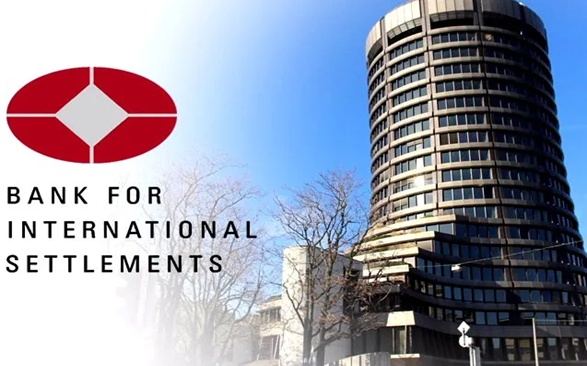by Jude Ayua
The Bank for International Settlements (BIS) Consultative Group on Innovation and the Digital Economy (CGIDE), in December 2024, proposed retail Central Bank Digital Currency (CBDC) architecture. The BIS invites central banks worldwide to explore the CBDC architecture while tailoring solutions to their jurisdictions.
The proposal focuses on technical design, operational models, and privacy considerations for retail CBDCs, aiming to balance innovation, security, and user-centric functionality. The proposal emphasizes scalability, privacy safeguards, and integration with other financial systems, promoting cross-border payments and tokenization.
Read also: IMF proposes framework for CBDC adoption.
Design and technological considerations
The proposed CBDC architecture incorporates several technological approaches:
- Hybrid model: The central bank oversees core infrastructure (issuance, settlement, and governance), while private firms provide user-facing services, with modular APIs enabling innovation.
- Flexible approach: Combines centralized oversight with some decentralization via permissioned ledgers, allowing regulated institutions to participate in distributed transaction validation.
- Token-based model: Offers programmable infrastructure supporting smart contracts and atomic settlement, while also accommodating account-based systems with minimal changes.
- Modular framework: Adapts to jurisdictions’ diverse needs by supporting existing or new settlement mechanisms tailored to local policies, regulations, and governance.
- Privacy safeguards: Employs technologies like encryption and data minimization to protect user data and limit exposure.
- User-centric design: Prioritizes end-user usability and preferences for greater adoption.
- Scalable model: Ensures efficiency in managing high transaction volumes.
Additional priorities include interoperability, cross-border payments, risk management, and uninterrupted business continuity to ensure comprehensive functionality.
Read also: 134 Countries Exploring CBDCs: 8 Major Findings You Should Know.
CBDC architecture processes
The proposal recommends four essential processes in the architecture of a CBDC: user enrolment, CBDC creation, CBDC destruction, and intra-ledger transfers.
- User enrolment: This process involves registering users on the CBDC platform by creating a wallet. Wallets and hardware enable users to view balances, send and receive funds, and get transaction alerts.
- CBDC creation: This entails converting commercial bank money into CBDC, increasing users’ wallet balances through transfers from an account in the real-time gross settlement (RTGS) system or exchanges with local currency.
- CBDC destruction: The reverse of creation involving conversion of CBDC back into commercial bank balances or cash, effectively reducing users’ wallet balances. This process includes deposits to RTGS accounts or cash withdrawals.
- Intra-ledger transfers: These are transactions where CBDC is transferred between wallets within the same platform, facilitating seamless movement of digital currency among users.
This streamlined architecture supports efficient CBDC operations, enabling secure and flexible use of digital currencies for diverse financial activities.
Pushback on CBDCs
There are varying perceptions of CBDCs across jurisdictions. In September, the Bank of Canada (BOC) released a report which revealed that Canadians showed little interest in using a CBDC, causing the BOC to slow down on its digital dollar project.
In the US, attorney John Deaton, known for representing XRP holders in the Securities and Exchange Commission lawsuit, vowed to oppose CBDCs. He described his fight against CBDCs as “a hill to die on.” His concerns are about the risks a centrally controlled digital ledger poses to individual liberty.
In the US state Missouri, a lawmaker Rick Brattin introduced a bill aimed at banning CBDCs in the state. The proposed legislation would prevent businesses from accepting CBDCs as payment and prohibit any CBDC research or development.
Payment capabilities of CBDCs
Notwithstanding the pushback on CBDCs, especially in the US, the BIS explained the advanced payment capabilities that CBDCs offer by integrating smart contracts, tokenization, and programmability features.
- They enable automated transactions and enhance financial efficiency.
- They bridge traditional and decentralized finance, support seamless tokenized asset transactions and settlement processes, as the BIS’s Project Helvetia shows.
- They also promise cross-border payment improvements, by reducing costs, transaction complexities, and boosting speed.
The BIS noted offline payment capabilities can extend access to unbanked populations in remote areas, as in initiatives in Peru and Ghana. These advancements make CBDCs potential for fostering financial inclusion, efficiency, and resilience in modern monetary systems.
Read also: Central Bank Digital Currencies CBDCs Introduction to Central Bank Digital Currencies (CBDCs)
Jude Ayua is a policy analyst at CAB. A lawyer, Jude is an associate at Infusion Lawyers where he is a member of the Blockchain & Virtual Assets Group. He is also a member of the Policy & Regulations Committee of the Stakeholders in Blockchain Technology Association of Nigeria (SiBAN). Jude reports and writes on crypto policy and regulations. jude@infusionlawyers.com
Discover more from Crypto Asset Buyer
Subscribe to get the latest posts sent to your email.



